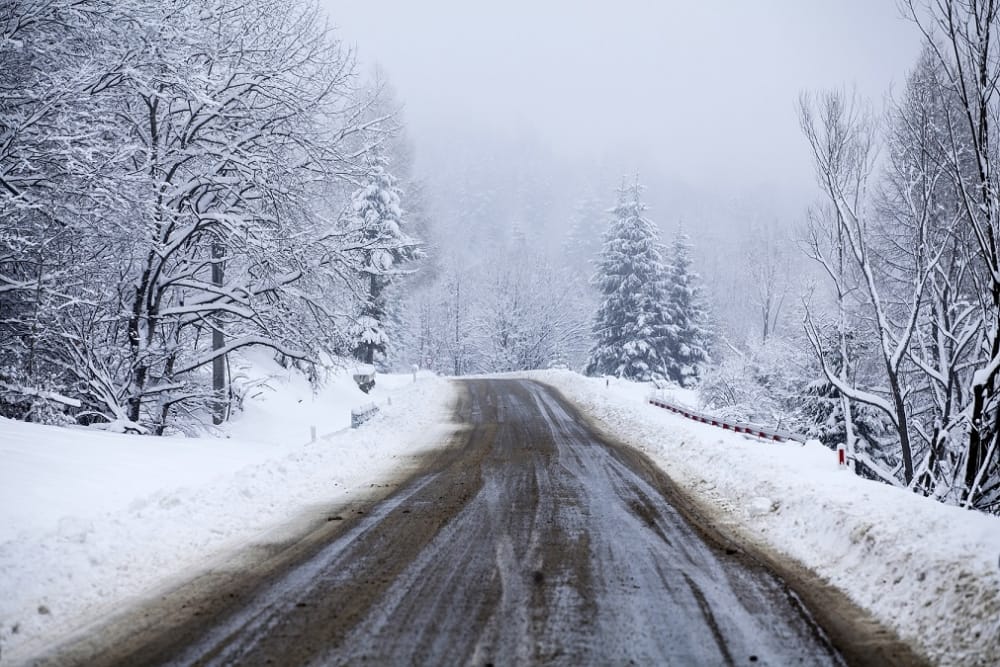Are There Different Types of Road Salt?
2020-07-20(41114)
During the harsh weather conditions in winters, ice and snow may cover the roads. The ice and snow cover threaten road safety and can cause vital damages and loss. Considering this winter road conditions, the sight of salt sprinkled on the roads and sidewalks in winter is not an uncommon one. You might have seen it multiple times as a measure taken to prevent accidents due to snow, ice, and frost. But what is road salt?
Road salt or de-icing salt is halite. It is a form of table salt or sodium chloride (NaCI) and a naturally mined mineral used to melt ice. Table salt is purified for the daily use of human consumption. Different from purified and edible table salt, road salt still contains impure minerals. Its color is typically gray or brownish.
Machines mine the deicing salt, crush it and then package it for delivery. However, deicing salt is not always used in its naturally mined form. Chemical additives might be mixed for different purposes as well. Before diving into different types of road salt, let us explain how deicing salt works.
How Deicing Salt or Road Salt Works
Traditionally one of the most used methods for deicing of the roads is using road salt. Deicing salt is generally spread on the roads by snowplows or dump trucks. As rock salt is the most affordable method of melting ice, it is a commonly preferred deicing salt type. But, sand and other chemicals might be added to rock salt as well as using different types of road salt. We will discuss different types of road salt later in this article.
How road salt works is a simple and basic process of chemistry. Deicing salt lowers the freezing point of ice. In other words, road salt drops the melting point of snow and ice. When road salt or deicing salt is used, as the melting snow will be saltwater, there will be a delay in the reformation of ice.
Salt dissolves in water. Breaking down into two ions; sodium ion and chloride ion, these ions disperse water molecules. That is to say, they push the water molecules apart which makes the ice harder to reform. This delay saves time for mechanical removal of the snow and makes it easier. Additionally, road salt prevents the adhesion of ice. This way deicing salt helps prevent accidents and ensures road safety.
Usage areas:
· For road maintenance: Parking lots, highways, sidewalks.
· For home usage: Garage entrance and garden
Is Deicing Salt Safe
Road salt can be unsafe for the environment. However, world-class salt producer Koyuncu Salt offers an environmentally-friendly de-icing salt solution that is available as dried salt in different grain sizes and road salt bulk. Moreover, we care about sustainability with environmental production techniques for deicing salt production.
Different Types of Road Salt
There are a lot of different types of road salt in the market. But which deicing agent should you choose that will work best for the purpose you need? Deicing salt types differ in their application and solution. What are the differences between deicing salt and other deicing agents? Let’s see the answers below.
Deicing Salt
There are three different types of road salt. Deicing salt types differ in the way they are mined or extracted.
· Vacuum Salt
· Rock Salt
· Sea Salt
Vacuum salt is fine road salt. Its extraction process is harmful to the environment. Unless gritted in combination with brine, it evaporates quickly. On the other hand, sea salt is environmentally friendly. Moreover, sea salt’s effect lasts longer.
We can categorize different types of road salt according to their components.
Sodium Chloride
Commonly referred as salt, Sodium chloride is the most used method for deicing. Rock salt known as halite is the commonly used one. The reason for its common usage is because it is inexpensive and widely available. Generally, prewetting agents are used with sodium chloride to reduce salt scattering. The usage of prewetting agents with sodium chloride lowers the cost of road maintenance as it decreases the amount of road salt used.
Magnesium Chloride
Magnesium chloride is often used as a prewetting agent for deicing salt in its liquid form. It is inexpensive and less corrosive compared to other chemical agents. Magnesium chloride can be produced or obtained by evaporation. The evaporation for magnesium chloride can be from the natural salty water sources such as salt lakes. Magnesium chloride works as deicing salt in this way; the chemical releases heat while dissolving, and thus helps melt the ice and snow.
Calcium Chloride
Calcium chloride which is often used for dust suppressant purposes on gravel roads can be produced or naturally found. This chemical is a powerful deicing salt agent as it can dissolve ice at extremely low temperatures. However, since calcium chloride is a relatively more expensive type of road salt, it is not commonly used.
Potassium Chloride
Potassium chloride can be found in the form of red or white granules. The red variety takes its red color from the iron contamination due to its being produced from shaft mines. The white variety is iron eliminated. This chemical is not very effective as deicing salt in extremely low temperatures. This is why it is often used with other deicing materials on winter roads.
Safer and Effective Deicing Salt or Road Salt
Road safety is crucial to protect the ones we love. Deicing salt is a necessary method to ensure our safety on winter roads. Ice, frost, and snow can be very challenging during harsh winter conditions, but different types of road salt offer needed solutions.
Koyuncu Salt provides eco-friendly deicing salt naturally produced from the Salt Lake to protect both you and the environment.
de-icing salt lake salt raw salt




